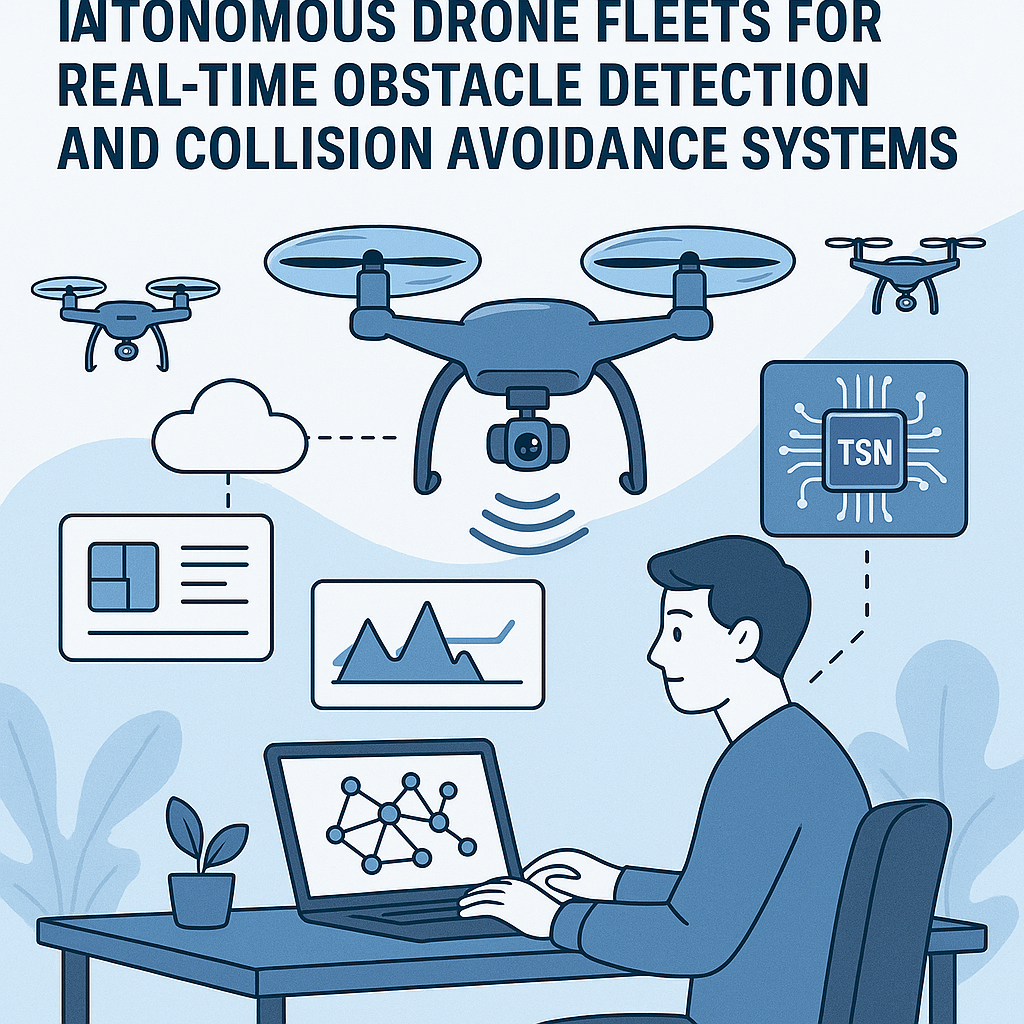Introduction
Time-Sensitive Networking (TSN) has emerged as a crucial technology for enhancing the performance of autonomous drone fleets, particularly in the realm of real-time obstacle detection and collision avoidance systems. As the demand for autonomous drones increases in various sectors, including logistics, agriculture, and surveillance, the integration of TSN ensures that these systems operate efficiently and safely. This blog post explores the significance of implementing TSN in drone fleets and outlines the key components necessary for its successful integration.
What is Time-Sensitive Networking (TSN)?
Time-Sensitive Networking is an extension of standard Ethernet networking that allows for the transmission of time-critical data with minimal latency. TSN employs various mechanisms to prioritize traffic, ensuring that time-sensitive messages are delivered promptly. This is particularly important for autonomous drones that rely on real-time data for navigation and obstacle avoidance.
Key Features of TSN
- Deterministic Latency: Guarantees that data packets are delivered within a specified time frame.
- Traffic Shaping: Manages network traffic to reduce congestion and ensure timely delivery of critical data.
- Stream Reservation Protocol: Allocates bandwidth for specific data streams, minimizing packet loss and delays.
- Time Synchronization: Ensures all devices in the network share a common clock, crucial for coordinating actions in real-time applications.
Benefits of TSN for Autonomous Drones
The integration of TSN into autonomous drone systems offers several advantages, particularly when it comes to obstacle detection and collision avoidance:
- Improved Safety: TSN facilitates faster communication between drones and their control systems, enabling quicker responses to potential collisions.
- Enhanced Coordination: With synchronized data sharing, multiple drones can operate in close proximity without interfering with each other.
- Reliable Data Transmission: TSN minimizes packet loss, ensuring that critical data related to obstacle detection is always available.
- Scalability: TSN can easily accommodate additional drones in the fleet without sacrificing performance.
Implementing TSN in Autonomous Drone Fleets
To effectively implement TSN in autonomous drone fleets, several steps must be followed:
1. Assess Current Infrastructure
Evaluate the existing network infrastructure to determine its compatibility with TSN. This includes assessing the hardware and software components of the drones and any ground control systems.
2. Select Appropriate TSN Standards
Different TSN standards may be suitable for various applications. Key standards to consider include:
- IEEE 802.1Qbv: Time-aware scheduling to prioritize time-sensitive traffic.
- IEEE 802.1AS: Precision time protocol for synchronizing clocks across the network.
- IEEE 802.1Qci: Per-Stream Filtering and Policing for managing traffic flows.
3. Upgrade Hardware
Ensure that all drones and networking equipment are equipped with TSN-compliant hardware. This may involve upgrading communication modules or integrating new sensors capable of supporting TSN protocols.
4. Develop Software Solutions
Create or update the software systems that manage drone operations to incorporate TSN capabilities. This includes improving algorithms for obstacle detection and collision avoidance that leverage TSN’s low-latency communication.
5. Test and Validate
Before full deployment, conduct rigorous testing to validate the effectiveness of TSN in real-world scenarios. This should involve simulations and controlled flight tests to ensure that the drones can react appropriately to obstacles in a timely manner.
Challenges in TSN Implementation
While the benefits of TSN are significant, there are challenges associated with its implementation in autonomous drone fleets:
- Complexity of Integration: Integrating TSN with existing systems can be complex and requires specialized knowledge.
- Cost Implications: Upgrading hardware and developing software solutions can involve significant investment.
- Training Requirements: Personnel may require training to understand and manage TSN-enabled systems effectively.
Future of TSN in Drone Technology
As the demand for autonomous drones continues to grow, the role of TSN in ensuring safety and efficiency will become increasingly important. Future advancements may include:
- Enhanced AI Algorithms: Integration of artificial intelligence with TSN for even more sophisticated obstacle detection and avoidance.
- Greater Interoperability: Development of universal standards that facilitate communication between different manufacturers’ drones.
- Real-time Data Analytics: Leveraging real-time data for improved decision-making and operational efficiency.
Conclusion
Implementing Time-Sensitive Networking in autonomous drone fleets is a transformative approach that enhances real-time obstacle detection and collision avoidance systems. While challenges exist, the benefits of improved safety, coordination, and reliability make TSN a vital component in the evolution of drone technology. As advancements continue, TSN will play a pivotal role in shaping the future of autonomous operations across various industries.



